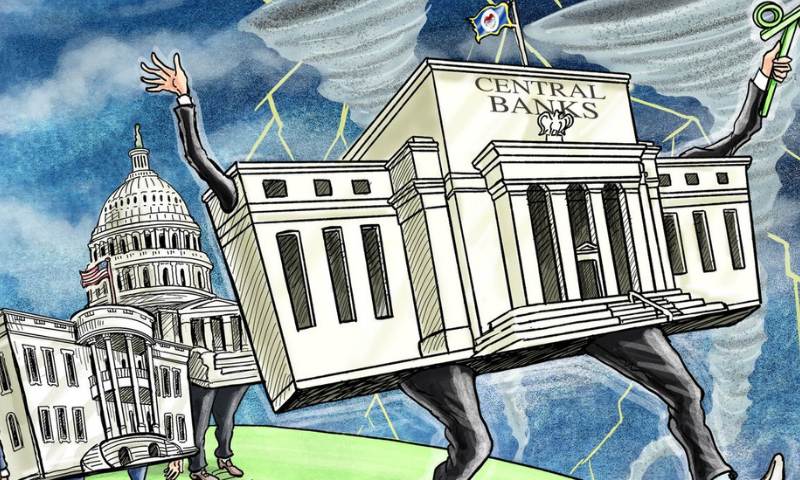The High Stakes of Money’s New Path: Banks Beware
Money talks, but it’s changing the conversation. Banks used to sit at the center of all our cash flows. No longer. The impact of financial disintermediation on banks hits hard, carving new paths in finance. As tech gets smarter, it offers you easy ways to invest, lend, and pay. So what happens to old-school banks? They face a crossroads: adapt or get left behind. Let’s dig in and find out just how big this shake-up is.
Understanding Financial Disintermediation and Its Drivers
The Rise of Fintech and Its Role in Redefining Finance
Fintech, or financial technology, is changing how we deal with money. What is fintech? Fintech is tech that helps us pay, save, and get loans online. It’s giving us new, easy ways to handle our cash. This shift is part of why banks now face big fintech competition. Start-ups with smart apps make it simple to manage money without a regular bank. This leads to a shake-up in the traditional banking disruption, with banks working hard to keep up.
The Shift Towards Peer-to-Peer Lending and Crowdfunding Platforms
Now, let’s talk peer-to-peer lending and crowdfunding. What are peer-to-peer lending and crowdfunding? They let people lend money to others or fund projects online. This cuts out banks. So, if you need money for a big idea, you might skip the bank and use one of these platforms instead. This move is part of financial disintermediation effects, where banks are less in the middle of money stuff. Banks see this and know it’s big for their future. They need to think fast about bank revenue models and keep their customers close.
So, banks stand at a crossroads. They’re watching as more folks turn to online lending platforms and other tech for their money needs. This isn’t great news for banks’ interest margins. If banks don’t act, smaller margins could hurt their profits. This wave of change in banking comes from folks wanting more control over their money. Tech makes this happen. And it’s not just loans. The shadow banking system, with firms that act sort of like banks but aren’t, sees action too.
Digital platforms and banks are now key players in finance. We see mobile payments and banking blend as people pay with their phones more. Even blockchain in banking is a thing, as this tech offers secure ways to move money that don’t need banks. It’s all about skipping the middleman, which is sometimes the bank. Now, doesn’t that sound like quite the ride for banks?
Asset-wise, capital markets disintermediation is another game in town. This means when you want to save or invest, you might not use a bank at all. You could go online and find other ways to grow your money.
What’s clear is this: banks face banking sector challenges. Yes, and maybe some of the toughest ones yet. Dealing with financial disintermediation effects is no small task. Bank-customer relationship change is part of this too. Banks are not just places to stash cash; they’re becoming more. They want to be your buddy in this whole money journey.
But hey, it’s not all doom and gloom! Banks are getting creative to keep us happy. They are reshaping bank revenue models and finding out how to make technology work for them. They are getting into the groove with digital platforms and banks are starting to look cool again. Tough times often lead to the best new ideas, so let’s watch what the banks will do next!

Assessing the Impact on Traditional Banking Models
How Technology-Driven Financial Services Are Disrupting Banking Revenues
Technology is shaking up the banking world big time. Apps and websites now let people borrow, trade, and save money without ever walking into a bank. This means banks are getting less and less of the pie. We call this shift financial disintermediation, and it’s a game changer.
Let’s talk about peer-to-peer lending. You know, sites where people can lend money to each other? They’re super popular but they pose a big problem for banks. Why? Because banks usually play middleman in lending, and with these sites, they’re left out. That means less money for them.
Crowdfunding platforms are another big hit to banks. Got a cool idea and need cash? You can just ask a bunch of folks online instead of begging a bank. More and more, people are doing just this. Great for innovators, tough for banks.
Fintech competition is fierce; these are tech companies focused on finance. They’re fast and they’re winning customers over. Banks have to hustle now more than ever to keep up and stay relevant.
Finally, I’ve got to mention digital platforms. Banks are racing to get online and mobile. They’ve got to, or they’ll fade away. They need to be where their customers are – on their phones and computers.
The Effects of Mobile Payments and Blockchain on Bank Profitability
Now, let’s dive into mobile payments. It’s all about paying with your phone. Quick, easy, and you don’t need your wallet. More people are choosing this, which is bad news for banks. They make money when you use their cards. If you’re tapping your phone instead, they lose out.
Blockchain is a whole new kind of trouble for banks. It’s tech that tracks who owns what without needing a bank to check it. That’s a core job banks have always had, and now it might slip right through their fingers.
You see, financial services are getting decentralized. That means they’re spreading out, not just stuck in banks anymore. It’s like banks used to have all the toys, and now everyone’s sharing them.
The loan market is changing, too. If companies and people can get money from other places, banks could lend less. Fewer loans mean less profit for banks.
In the face of all this change, banks have a big question looming over them: adapt or fade? As a fintech strategy analyst, I’m watching closely. It’s clear that banks can’t just sit back. They need new ways to make money and keep their customers from wandering away.
Tech startups are eyeing the banking sector like a juicy steak. They’re lean, they’re hungry, and they’re clever. Banks have to get smarter to stay ahead. This means looking at venture capital, not just as a way to invest but also as a lesson in agility and innovation.
Shadow banking, a system where stuff like hedge funds and investment firms do bank-like things, is also on the rise. It’s a murky area, but it’s growing, and banks must pay attention.
Everyone knows change is hard, but it’s also full of chances to win big. For banks, it’s about playing smart and not getting left behind.

Strategies for Banks to Adapt and Thrive
Innovating Bank Revenue Models in Light of Disintermediation
Times are changing, fast. Banks are feeling the squeeze as new tech gobbles up their lunch. It’s not all gloom, though. Smart banks can still win. They must rethink how they make money—time to get fresh ideas rolling. Banks used to sit comfy, making easy cash from folks saving and borrowing. Now, with the likes of peer-to-peer lending in play, that comfort’s gone. But here’s a thought to chew on: what if banks evolved just like animals do? They could use disintermediation to their favor. It works when they spot the chance early. Say they team up with fintech, or even buy one. Boom! They’re in the game.
Imagine a world where your bank offers more than loans. They could help you invest in startups or provide killer tools for your finances. All this means banks need to stop just watching and start acting. Banks could create new services that no app on your phone can offer yet. They must fix up their old ways and roll with the new tech. Easy-to-use apps and personal finance help—that’s where the gold is.
Leveraging Digital Platforms to Enhance Customer Experience and Retention
So, we’ve nailed the money-making side. Now, let’s glue customers to their banks. Digital platforms are like magnets—they can pull folks in and keep them happy. The key? Make banking as easy as pie. People love simplicity and speed. They want to tap a button and get stuff done—pay bills, send cash to friends, save money without the headache.
Banks must build spaces where customers feel like kings and queens. We’re talking about dashboards that show all your money moves. Apps that give tips to grow your cash. Even chatbots that know just what you need, when you need it. Banks must become helpers, not hurdles in our lives.
A truth we can’t ignore—when folks find something better, they’ll switch. No one’s glued to one bank anymore. So, banks need to listen up and deliver what we want. A great digital platform will speak for itself. If my bank saves me time and stress, why would I leave? Each good move a bank makes stirs trust. Keep trust, and customers stick around.
Banks that get this right will stand tall. Others might stumble. It’s all about giving power to the customer. Banks need to be in our pockets, on our phones, making life easier. And they must do it in a way that’s smooth and safe. When banks become our pals, helping us win with money, they’ll thrive, even as the world spins into the digital future.
In short, banks face a stark choice. They either innovate and join the digital race or risk fading into the background. It’s adapt or get left behind. Welcome to the banking revolution. Buckle up, it’s going to be quite the ride.

The Future Landscape of the Banking Sector Amid Disintermediation
Capitalizing on Trends in Consumer Direct Financing and Robo-Advisors
Banks used to be the go-to for money needs. Not anymore. With direct financing and smart investing robots called robo-advisors, people have new choices. These choices don’t involve banks at all. What does this mean? People can borrow, lend, and invest their money without ever walking into a bank. This is financial disintermediation.
Peer-to-peer lending platforms let folks lend money to others online. This bypasses banks. They match people with money with those who need it. This has a big effect. Why? It cuts down the cost of borrowing. It also offers lenders better returns than bank savings accounts.
What about banks then? Well, they need to step up their game. Banks can take this chance to work with these new techs. For example, they can create partnerships with peer-to-peer platforms. This way, they can still be a part of the new money game.
Crowdfunding is another buzz. It’s where people pool their money for a cause or a project online. It’s another bank bypass. Crowdfunding helps folks with great ideas get money without a bank loan.
Balancing Innovation with Maintaining Strong Bank-Customer Relationships
Now, I want you to picture your local bank. It’s not just a place to store cash. It’s a place where you know the folks who handle your money. That trust is key. Trust keeps customers coming back to banks. Some might worry that tech will harm this trust. But, here’s the deal – banks have a solid chance to keep their customers close.
How? By combining new tech with their good customer service. Think about it. Banks can use digital platforms to make banking smoother. They can make apps that let you bank from anywhere. They can use data to better understand what customers need.
But hey, don’t forget the human touch. Banks should keep developing their customer service. Yes, tech is cool. But sometimes, you just need to talk to a person. Banks that mix tech and great service can win big. They can keep their customers happy and still make money.
To wrap it up, banks are at a crossroads because of financial disintermediation. Peer-to-peer lending and crowdfunding are changing how money moves. But this isn’t the end for banks. It’s a chance for them to reboot. It’s a call to blend what’s always worked with shiny new tech. Banks that get this balance right will not just survive. They will thrive.
In this post, we dove into how fintech is changing finance, with things like peer-to-peer lending and crowdfunding growing fast. We saw how new tech like mobile payments and blockchain can hurt bank profits. Banks must innovate their ways of making money and use digital tools to keep customers happy.
Looking ahead, banks face a big challenge from consumer direct financing and robo-advisors. But if they can keep blending new ideas with strong ties to their customers, they can still shine. The key lies in adapting swiftly and smartly to stay ahead in the finance game. Remember, it’s not just about keeping up; it’s about leading the way. Let’s watch how banks turn these challenges into chances to win!
Q&A :
What is financial disintermediation and how does it affect banks?
Financial disintermediation refers to the process where savers bypass traditional banking institutions to invest their funds directly into securities or other types of investments. This affects banks as it can lead to a decrease in the amount of deposits, which in turn can reduce their lending capacity and overall profitability. Without the usual flow of funds from deposits, banks may also be forced to explore alternative and potentially more costly sources of funding.
How has the trend of financial disintermediation impacted the banking industry?
The trend of financial disintermediation has had a significant impact on the banking industry by shrinking the traditional deposit and loan model. As individuals and businesses choose to invest in mutual funds, stocks, or bonds instead of deposit accounts, banks lose a primary source of low-cost funding. This can lead to a reduction in interest income and necessitates the development of new products and services to replace lost revenues.
What are the consequences of financial disintermediation for consumers?
For consumers, financial disintermediation can offer more investment options and potentially higher returns than traditional bank deposits. However, it also involves greater risk as individuals take on investment decisions that may have previously been managed by banks. Moreover, with reduced reliance on bank deposits, banks may offer lower interest rates on savings or increase fees to maintain revenue, potentially disadvantaging consumers who prefer traditional banking services.
In what ways are banks responding to the challenge of financial disintermediation?
Banks are countering the challenge of financial disintermediation by diversifying their services, including offering their own investment products like mutual funds or brokerage services. Additionally, many banks have increased their focus on fee-based services, technology and mobile banking innovations, and more personalised customer service to retain clients and attract new business despite the changes in the financial landscape.
Could financial disintermediation lead to a more stable financial system?
Financial disintermediation could potentially lead to a more stable financial system by reducing the concentration of funds within traditional banks and spreading the risk across a wider array of financial instruments and markets. However, it may also introduce new risks as investors and non-bank entities assume roles traditionally played by banks, which are typically subject to stringent regulation and oversight. The stability of the system, therefore, depends on the balance between these factors and the regulatory frameworks governing them.



